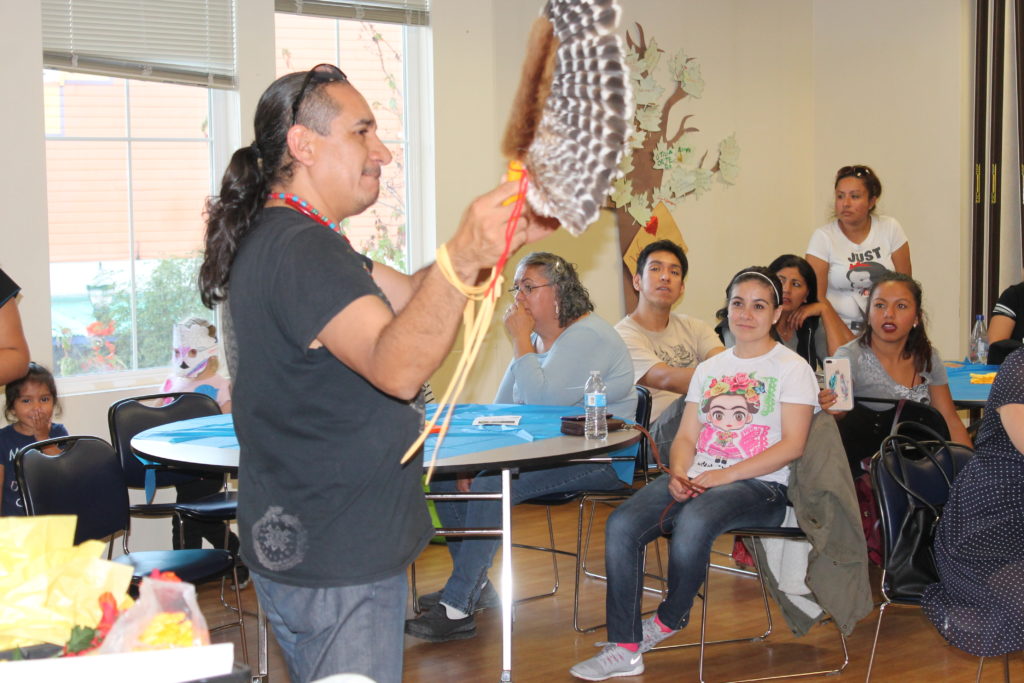Dia de los Muertos 2020 from Isaac Olsen on Vimeo.
The Day of the Dead (el Día de los Muertos), is a Mesoamerican holiday where families welcome back the souls of their deceased relatives for a brief reunion that includes food, drink, and celebration.
The holiday is celebrated each year from October 31- November 2. While October 31 is Halloween, November 1 is “Dia de los inocentes,” or the day of the children, and All Saints Day. November 2 is All Souls Day or the Day of the Dead. According to tradition, dated back some 3,000 years, the gates of heaven are opened at midnight on October 31 and the spirits of children can rejoin their families for 24 hours. The spirits of adults can do the same on November 2. The Aztecs and other Nahua people living in what is now central Mexico held a cyclical view of the universe, and saw death as an integral, ever-present part of life.
Art and Traditions during the Oakland Dia de los Muertos Festival
More than $25,000 in grants and stipends are awarded to artists, danzantes, cultural practitioners, and community members in order to bring traditional art and culture to the Festival each year.
Each year The Unity Council partners with local artists, traditional danzantes, and community members to bring the arts and culture of the Dia de los Muertos tradition to the Fruitvale. The four main elements of art and culture include:
Festival Poster
Every year The Unity Council makes a call for artists for the official Day of the Dead poster. This poster is distributed all over the Bay Area and is used on the official merchandise for that year, creating a huge new audience for that artist. Artists are invited to submit a painting, drawing or graphic art that represents the theme picked by the poster committee; last year the theme for the poster was “Our Community and Our Roots.” The poster committee is formed by artists, community members, and selected Unity Council staff; they choose the art to be featured in the poster based on design quality, adherence to the theme, compliance with the submission requirements, and the one-page artist’s statement. The selected artist receives a cash prize package.
Danza Azteca
Called Danza Azteca, Danza Mexica, or other names, Danza Azteca is more than just dance, it is a spiritual movement practice, a form of prayer and a way to commune with the spirits of the earth, sky, and water. Danzantes wear elaborate regalia such as feathered head dresses, painted faces, ankle rattles called chachayotes, and are dressed in ceremonial garments.
Traditional Arts Workshops
Each year the organizers of the Festival plan for a free series of workshops in October, open to all ages, dedicated to teaching Oakland residents about the traditional arts around the holiday like making papel picado, paper flowers, sugar skulls, and setting up a Day of the Dead altar. All workshops will take place in Fruitvale and will be free and open to the public. The lead artists are paid a stipend for their time and expertise. The goal of these workshops is to pass down the knowledge of these traditional crafts and the meaning behind them to a new generation.
Altars
One of the main attractions and the most important element of the Día de los Muertos Festival in Fruitvale is the creation of more than 30 ornately decorated altars (ofrendas) at the center of the Festival map. The altars are set up by local artists and community members and commemorate loved ones, community leaders, or to raise awareness of unjust deaths, such as from immigration detention centers, gun violence, or hate crimes.
Altars at the Festival are a minimum of 10ft x 10ft in size; the largest, the Altar Mayor is a 20ft x 20ft square. All altar artists receive a stipend for their participation in the Festival, and every group or individual artist must apply for a spot. Applications are typically open in
Altar Gallery from 2019 Día de los Muertos Festival:
Artist credit listed when known – contact development@unitycouncil.org to help us identify the artists!
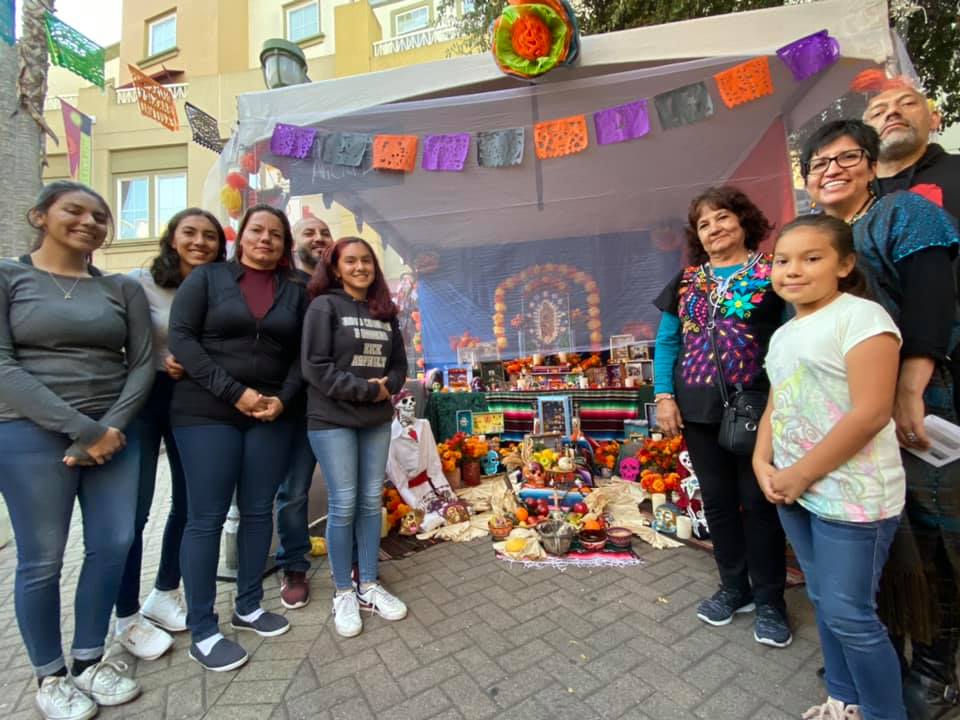
Altar created by Alicia Diaz 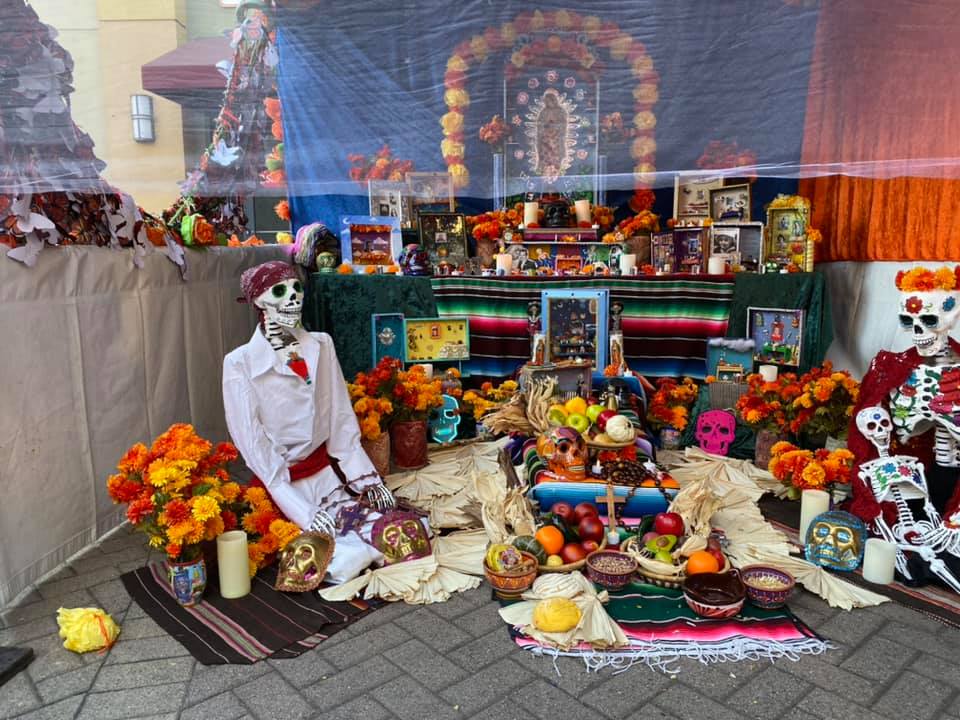
Altar created by Alicia Diaz 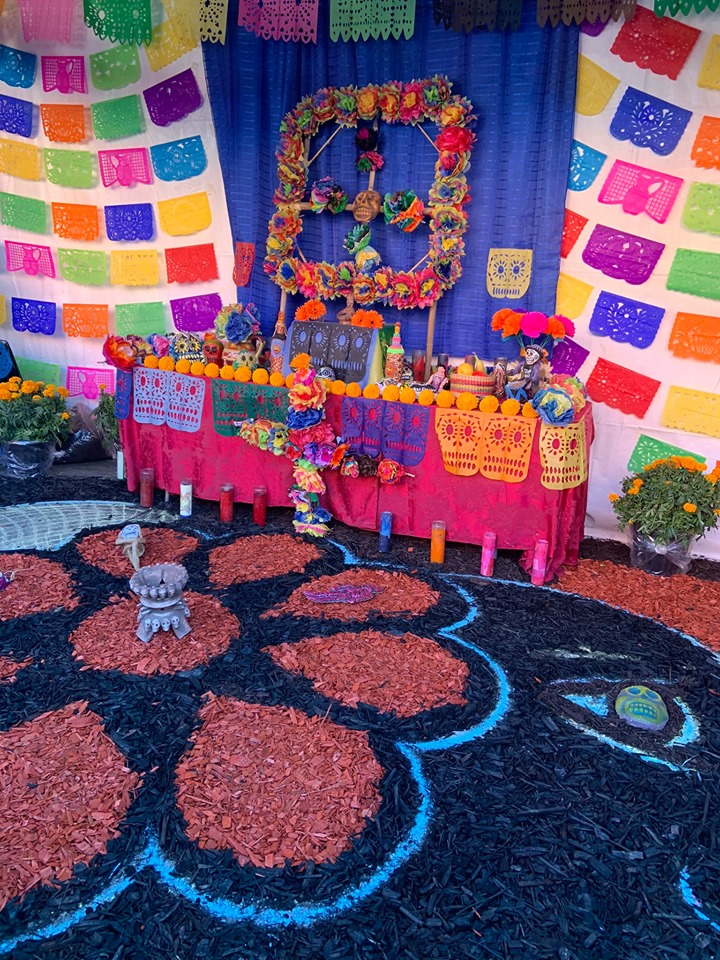
Altar created by Daniel Camacho 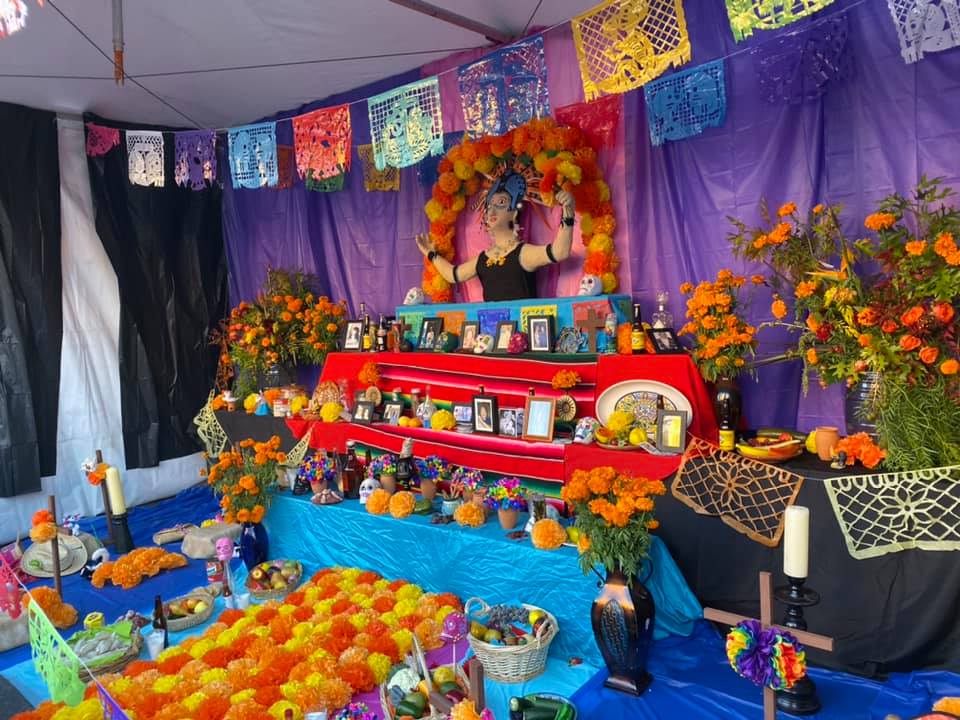
Altar created by Andrea Luna 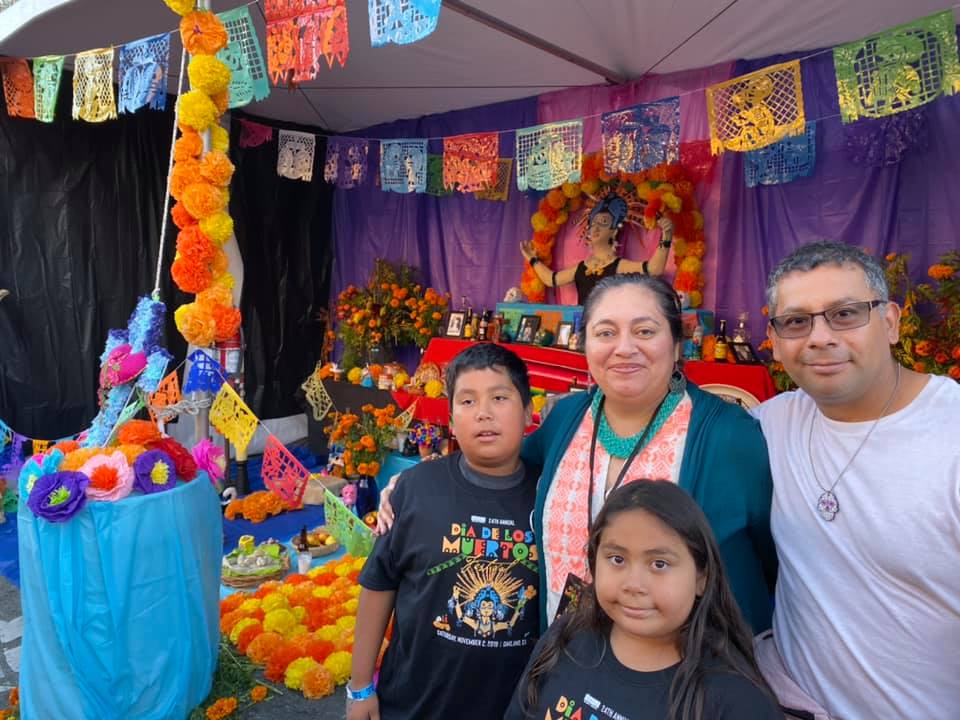
Altar created by Andrea Luna 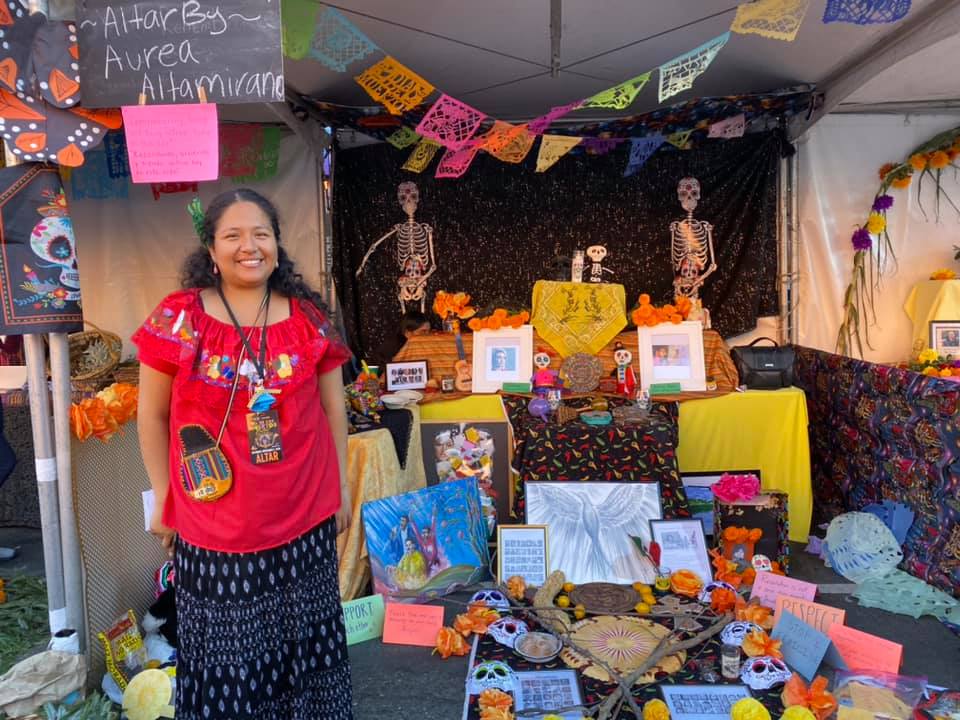
Altar created by Aurea Altamirano 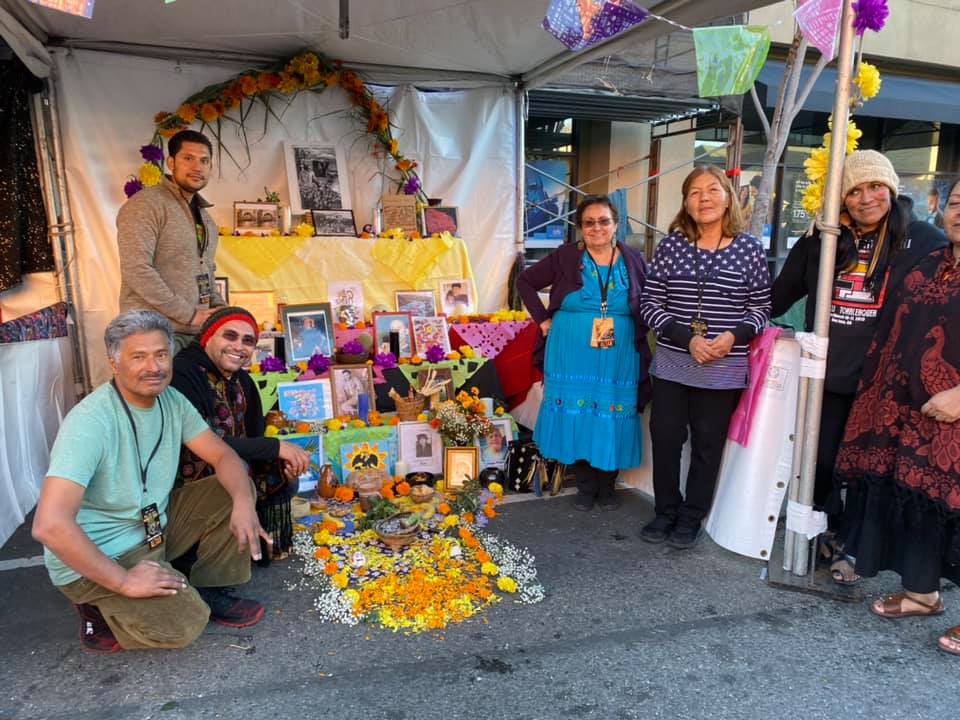
Altar created by Consejo Interamericano de Tradicion y Cultura 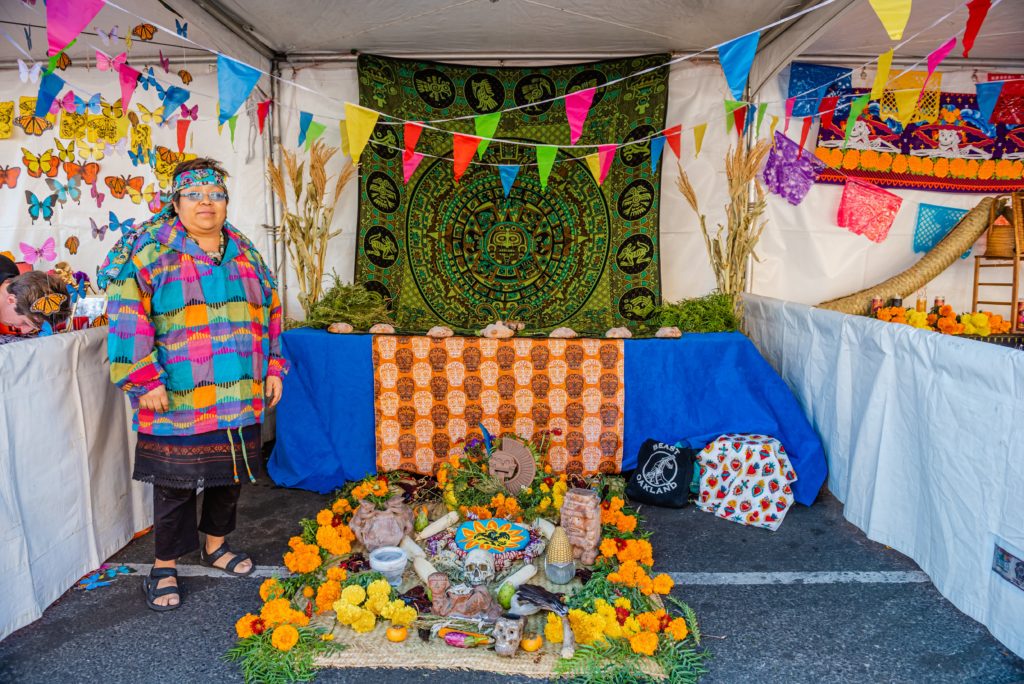
Altar created by Teresa Cortez 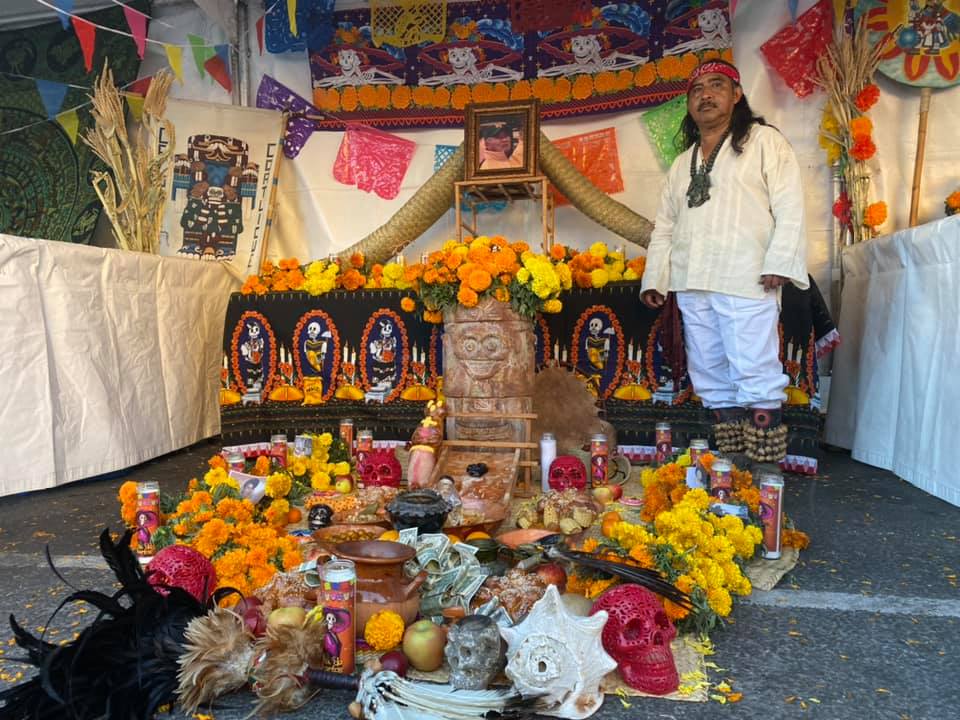
Altar created by Ernesto Cortez 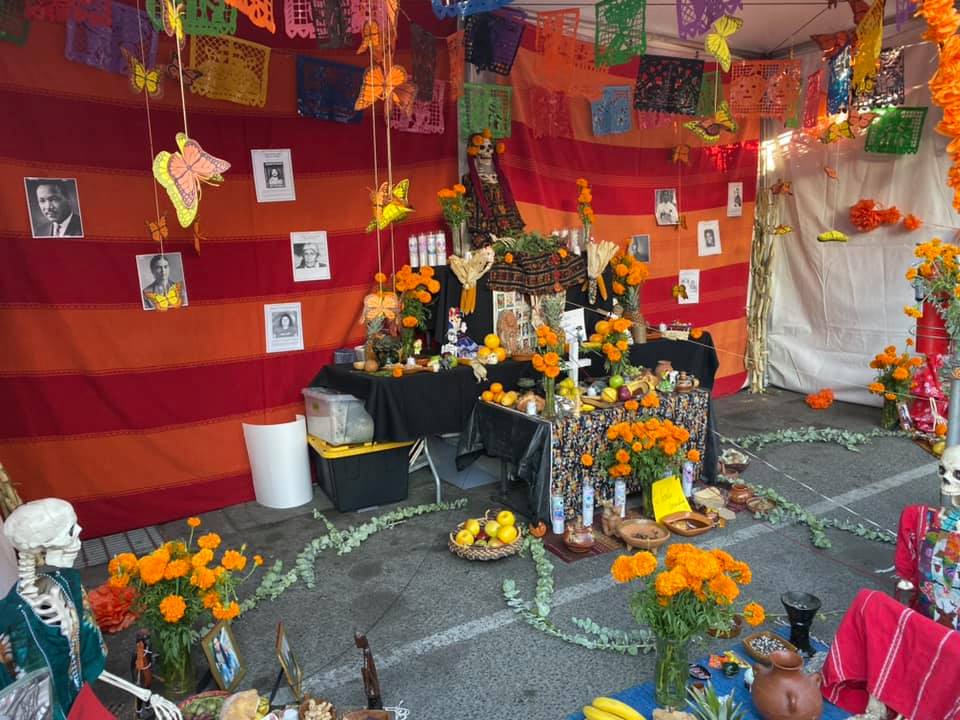
Altar created by Familia Cooperativa 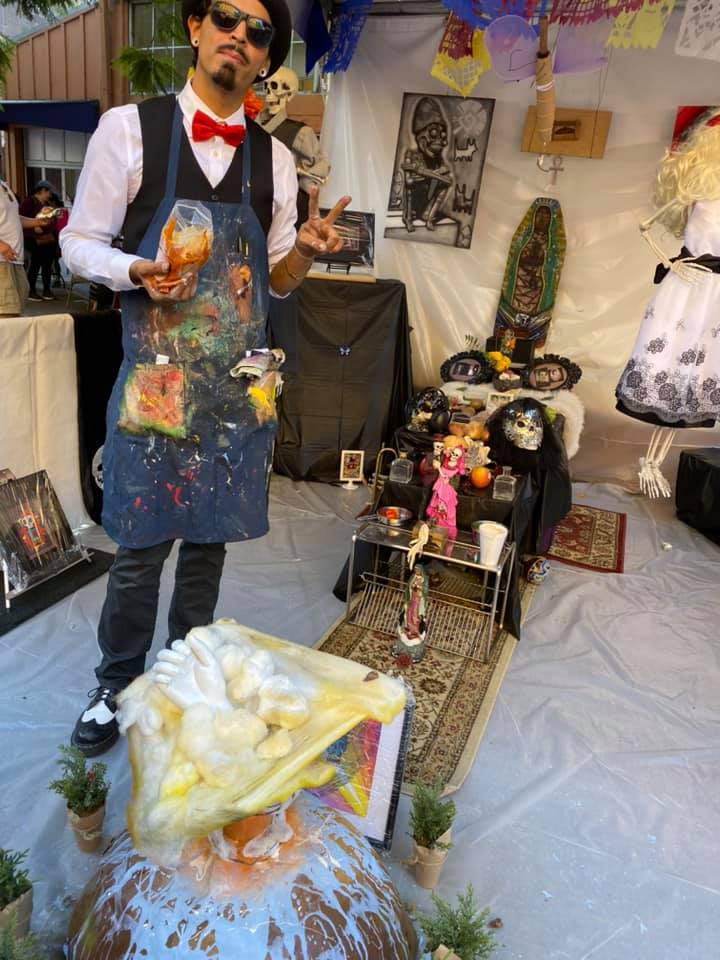
Altar created by Julian Marquez 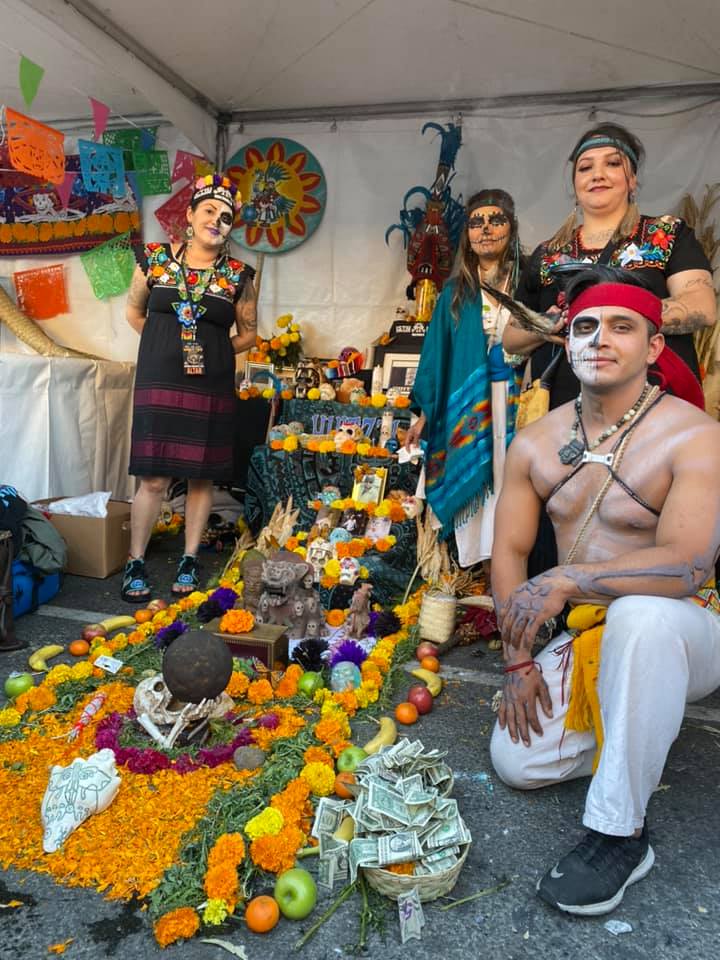
Altar created by Maricela Sandoval 
Altar created by Mujeres Unidas y Activas 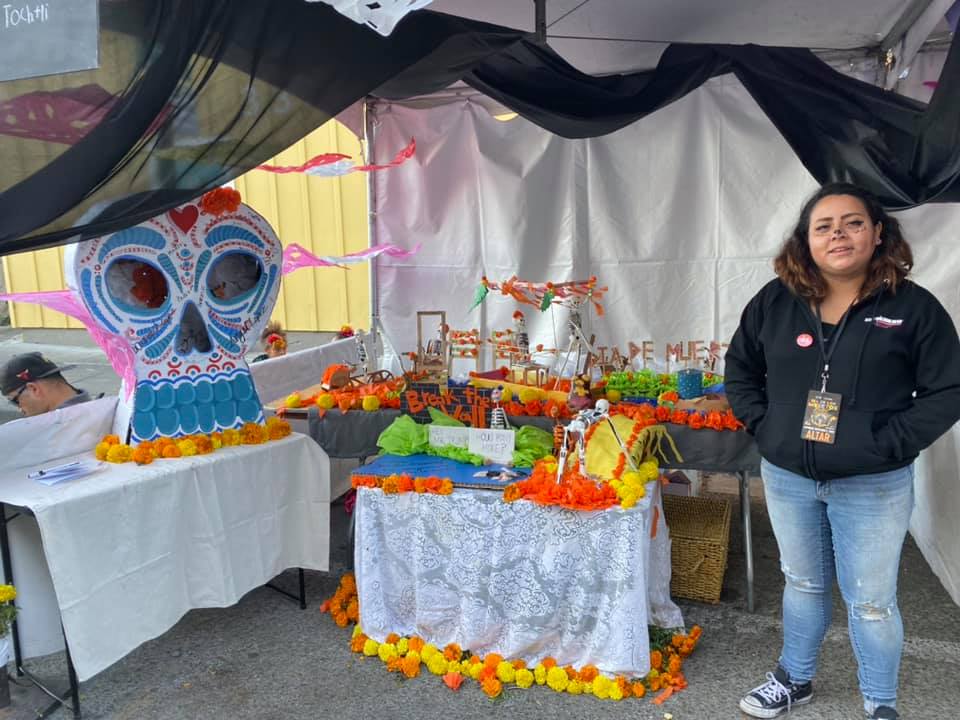
Altar created by Nahui Tochtli 
Altar created by Oakland Zoo 
Altar created by PEERS 
Altar created by Prospera 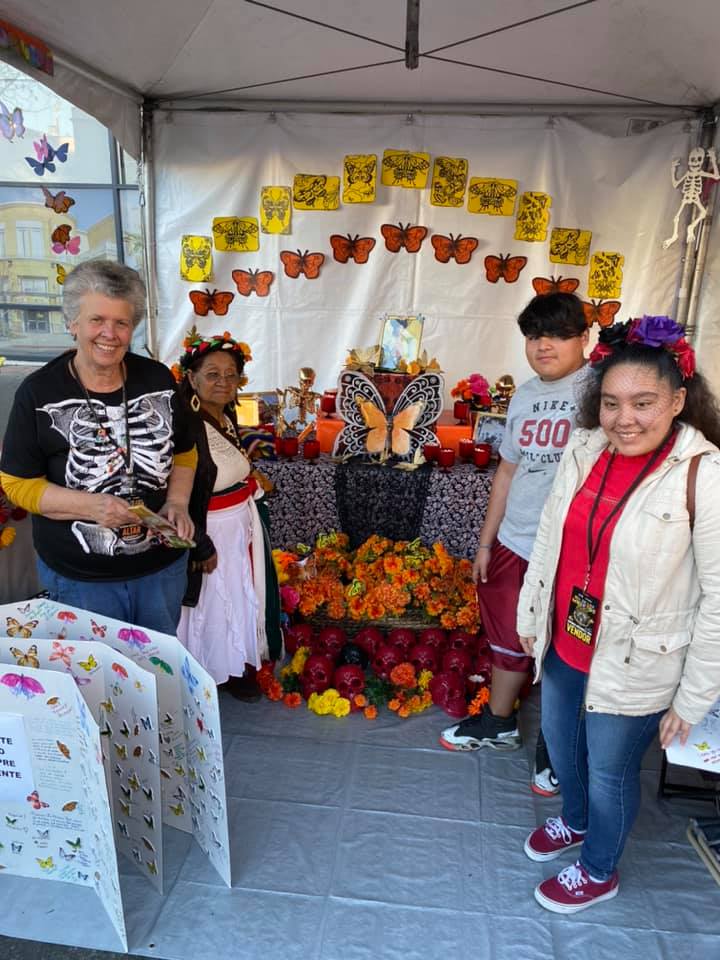
Altar created by Peralta Hacienda Historical Park 
Altar created by Lilia Olsen 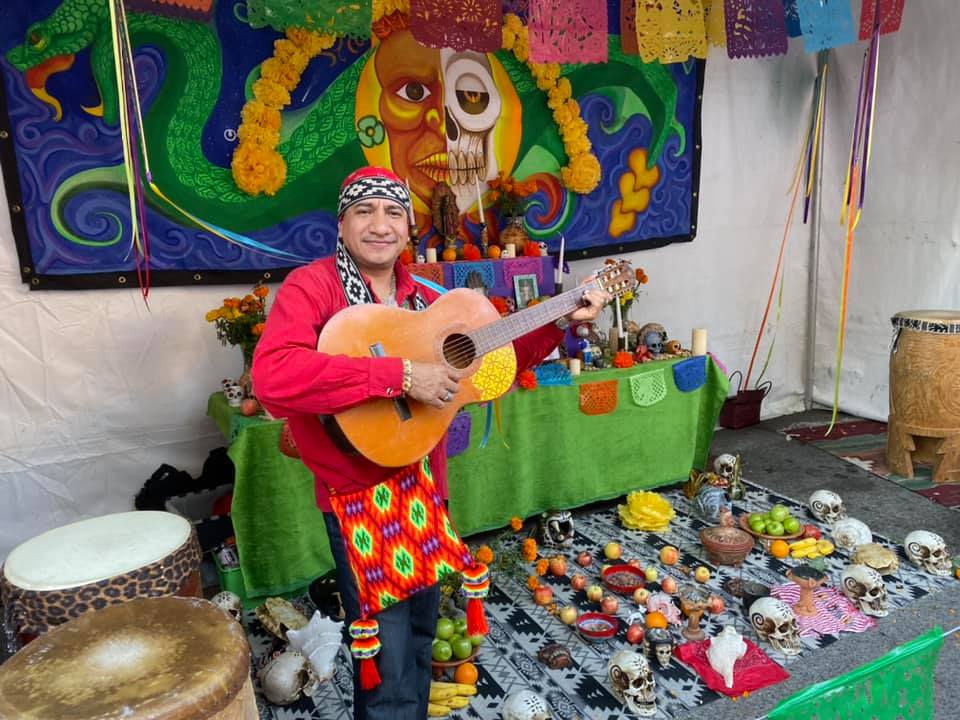
Altar created by Ernesto Olmos
Elements of a traditional ofrenda contain:
- Arch / Gate at the front of each altar representing the entrance.
- Elevated offering or “hearth” of the altar – traditionally a 9-level platform where offerings are presented.
- Lights: traditionally represented with candles.
- Smoke: traditionally represented with burning of copal on a copalera.
- Traditional flowers for Day of the Dead, the cempasuchil, or marigold flower.
- Offerings of food: to feed the visiting ancestors their favorite meals. Traditional foods offered include tamales, mole, pan de muerto, chocolate, oranges, bananas, and grain (corn, beans, seeds).
- Decorative cloth: yellow or orange or a traditional textile art.
- Sugar skulls.
- Photos and depictions of those who are dead.

